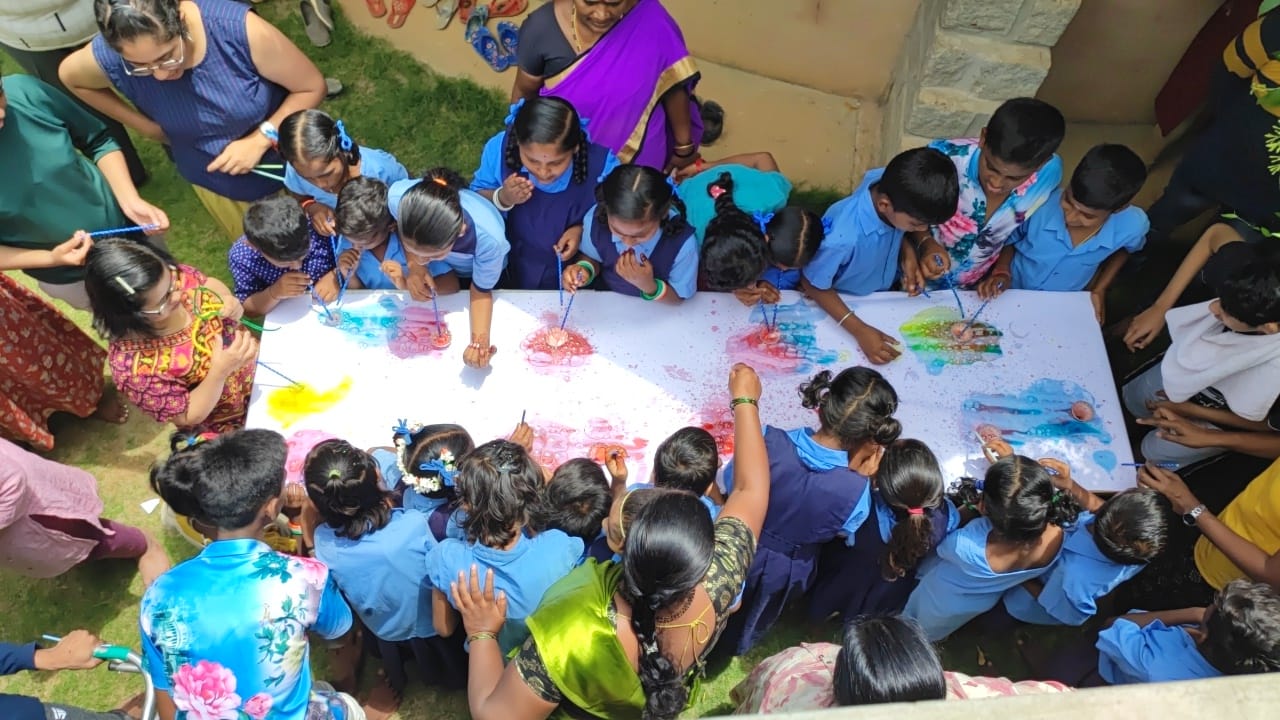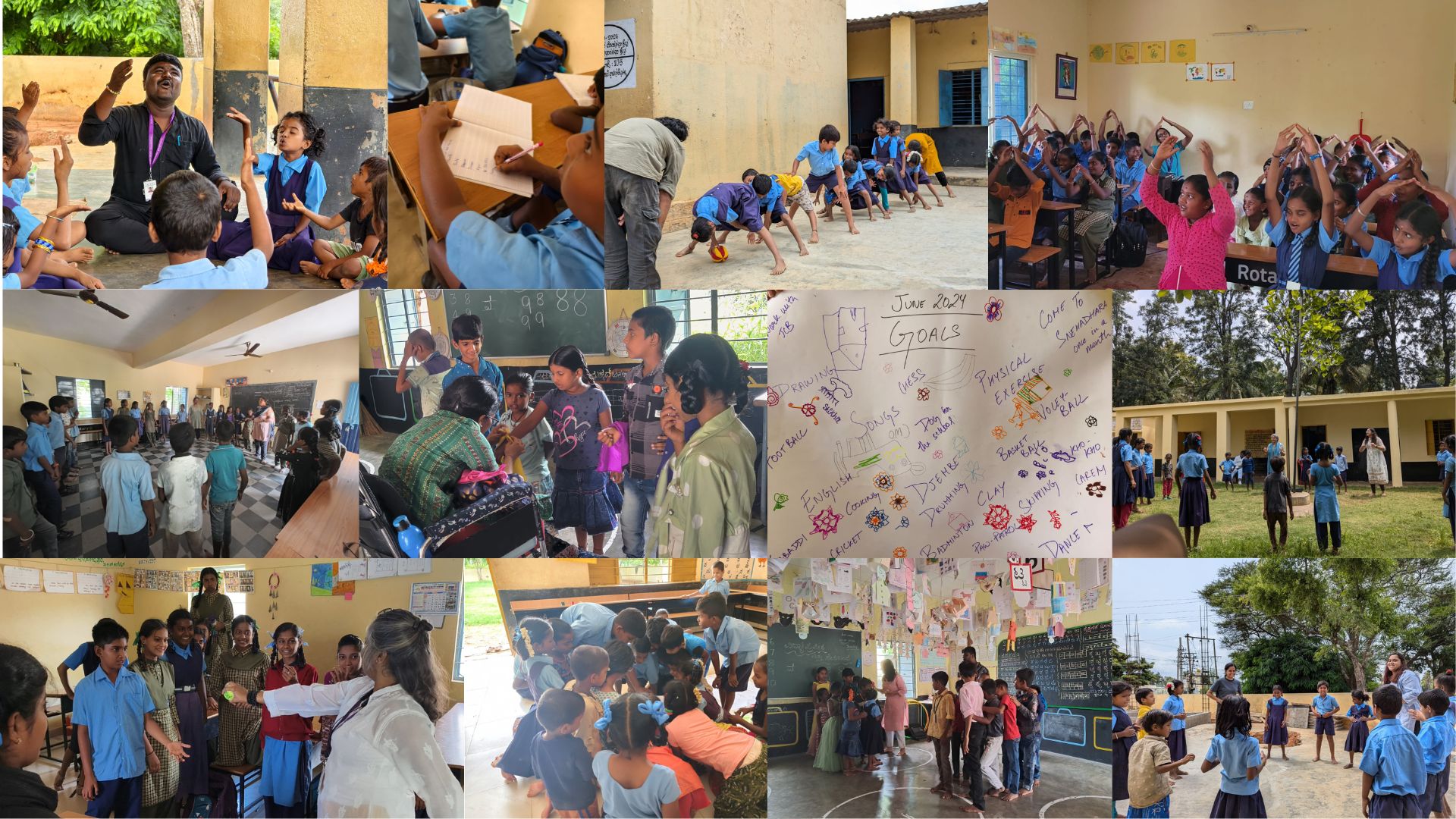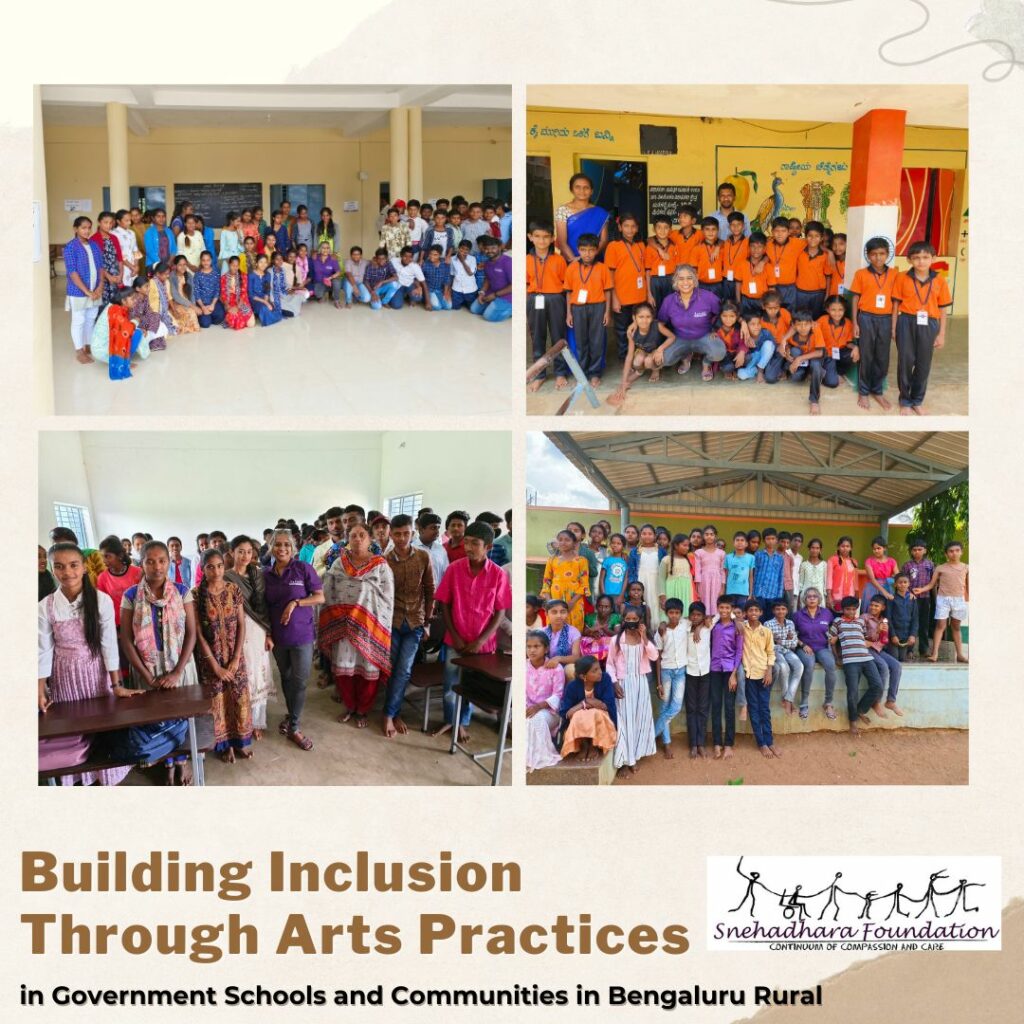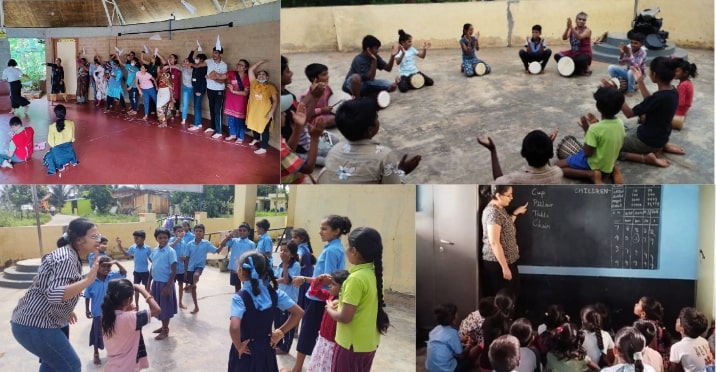Snehasangiti
Snehasangiti enables our children to find their voices, among peers, in an inclusive environment at a mainstream school. It is one of our flagship programmes on inclusion.


Inclusion is about the intentional building of relationships and creating conversations.
Inclusion is recognizing our universal “oneness” and interdependence. Inclusion is recognizing that we are “one” even though we are not the “same”. Inclusionary spaces welcome, acknowledge, affirm, and celebrate the value of all learners
At Snehadhara we have seen that respect and understanding grow when children of differing abilities have the opportunity to play and learn together. Since the last three years, through Snehasangiti, our collaborative gurukul, we were able to put into practise our hope of creating such a community of learners. Our children have shown us that communities grow when people honour a commitment to laugh, shout, cry, argue, sing, and scream with, and at, one another with mutual respect and understanding.
We can’t ever honestly celebrate diversity if we pretend to bring in the harvest before we have tilled the ground together. So through Snehasangiti, we prepare for another year of a rich harvest of empathy, interaction, acceptance, participation and legitimacy by seeking out spaces that are ready to walk this path with us.
Using the Arts as the momentum, we drive this endeavour towards a community, a society that celebrates diversity.
Our Engagements
Government Schools
Government schools are a great starting point to mainstream inclusion as there is evident acceptance of diversity in learning. Working with them has allowed us to further our efforts of taking creative interventions into schools and touch the lives of a vast spectrum of children.
At the heart of this programme is the belief that every student deserves access to arts practices that create opportunities for a learner to belong, learn together and meet learning outcomes with a sense of togetherness and acceptance. SF to harness the immense potential of arts in promoting social change and building stronger, more compassionate communities of children. In our true SF way, we are taking the universal language of the Arts to express our emotions, share our stories, and bridge divides.
Given the limited availability of resources and budget allocations, our direct interventions with government schools are largely self-funded and we invite people to contribute to this cause allowing us to reach many more beneficiaries and children.
Our Work with Government Schools in 2024-25
Number of Schools
Number of Children
Districts Covered in Karnataka
A commitment to equity, accessibility and respect for the unique abilities and perspectives of all individuals is an absolute prerequisite for promoting arts for inclusion. Our work of more than a decade has demonstrated that by creating an inclusive arts environment, we can foster creativity, empathy, and social cohesion within our communities. We believe that arts for inclusion means ensuring that all individuals, regardless of their background or abilities, have access to environments where one feels belonged and the freedom of choice.
Snehadhara Foundation began its work with children from government schools in local neighbouring communities in 2021. The programme began with 1 government school and the village community where the school was situated. In 2024, the programme has expanded to include a total of 7 government schools in 2024-25.
The curriculum for 2024-25 is centred around Environmental and Home Sciences as drawn from the Central and State Boards of Education and National Institute of Open Schooling (NIOS), an institution under the Ministry of Education, Government of India. Home Science is a multidisciplinary field that encompasses various aspects of domestic life, including nutrition, food science, textiles, human development, family relations, and home management.

Our Previous Work with Snehasangiti

This academic year will see the scaling of our direct beneficiary work with offering API sessions across a few communities and government schools in Bengaluru Rural. This groundbreaking initiative will possibly be the first of a kind that will work in these spaces look at the power of arts to create a learning space where everyone feels seen, heard, and included.
At the heart of this program is the belief that every student deserves access to arts practices that create opportunities for a learner to belong, learn together and meet learning outcomes with a sense of togetherness and acceptance. SF to harness the immense potential of arts in promoting social change and building stronger, more compassionate communities of children. In our true SF way, we are taking the universal language of the Arts to express our emotions, share our stories, and bridge divides.

During this academic year, the project with the children at the Arjunabetahalli Government school continued, focusing on weekly sessions for meeting psychosocial and academic goals. The work with the group has also largely been about creating inclusion by bringing the group to the Direct Care campus and in Sangam programmes to increase their social world.

During this year, there were many inclusion projects that flagged off at Snehadhara Foundation. While the work with the Sri Sadguru Sai Old Age Home continued, we also started to work with nearby government schools in Nelamangala, including the NSHPP Government School, using arts methodologies to meet psychosocial and academic goals.
This academic year, our inclusion project with Sri Sadguru Sai Old Age Home took off! It homes 25 senior citizens and 5 young children in their residence in Dasanapura. The team has been visiting and conducting arts based sessions with them from August 2021, to promote psychosocial and emotional wellbeing, and promoting group cohesion. We look forward to building the project and having our Direct Care children interact with this group.
Both the groups learnt songs in various languages from one another. They took part in stories. Stories had been extensively used in this term. Games and dance seemed to be the favourite of most of the children present in the session. While children participated in games often, they came up with new games on their own. And it was endearing to watch children imitate each other while they danced.
“Inclusion works to the advantage of everyone. We all have things to learn and we all have something to teach.”
-Helen Henderson
Our Snehasangiti program has been the harbinger of inclusive thought and action for both Snehadhara as well as Kids Corner for the last 2 years. Co-locating with Kids Corner has enriched the learning for both organisations. The first year of tentative steps, albeit with a strong belief in inclusion, acquainted the children with one another and opened a chapter of creative expressions leading towards allowance and acceptance. The next year saw the strengthening of the process as the connections increased and the children approached each other with more confidence.
In 2018-2019, the intent was to empower the children to lead the way, to let them hold the harness and steer the program. Through dance and song, rhythm and movement, vibrant colours and playful moments, the children found their feet as they met every Tuesday. They led the warm-ups, played games and harvested opportunities to interact with each other demonstrating their ability to play and learn together in the varied field of diversity.
Our engagement with Kids Corner in 2016-17 was a clear demonstration of the fact that when hearts are big enough to allow, spaces open up to accommodate.
Our children were hosted with grace, delight, respect and joy at the Kids Corner premises every Wednesday and amidst the artistic domain of songs and music, play and games, paints, colour and balloons a beautiful dialogue emerged. Sometimes the children of Kids Corner were invited to events which they shared with the children at Snehadhara in varied outdoor spaces. The intent remained for them to partake of each other’s worlds and savour the uniqueness of the diverse spaces.
Carrying forward this conversation between the two groups of children from Snehadhara and Kids Corner, we continued in 2017-18 with the same model of buddying one another, learning from each other. Learning, not just tangible forms but also communicating with, receiving from , rejoicing in, sharing with and cheering each other. A dual engagement in this manner served to enhance the social competence, acceptance and allowance for both groups.

